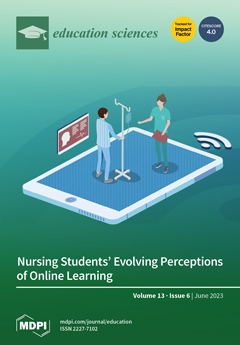Oral stories have historically been used by Indigenous peoples as an educational tool. In contexts of social diversity, where Indigenous peoples are a minority, these stories are excluded from formal education or used in ways in which their original meaning is lost.
Epews
[...] Read more.
Oral stories have historically been used by Indigenous peoples as an educational tool. In contexts of social diversity, where Indigenous peoples are a minority, these stories are excluded from formal education or used in ways in which their original meaning is lost.
Epews are oral stories that form part of the family education of the Mapuche people. This article aims to reflect on the emotional socialization mechanisms in formal education (kindergarten and school) and also from the perspective of Mapuche family education, taking the
epew as a basis for the learning process of knowing how to feel. The methodology corresponds to the Delphi method, in which 40 people participated (experts in methodology, literature, intercultural education, Mapuche academics, and Mapuche families). The results allow us to highlight the importance of the
epew in the learning process of knowing how to feel in early childhood education. These results are organized into categories such as (a) the conceptualization of the
epew; (b) reporting; (c) the
epew and its function: Mapuche values and anti-values; (d) articulation with territory; and (e) early childhood education proposals. The results conclude that the implementation of the
epew in the classroom, through the incorporation and visibility of socialization mechanisms, values, and rules of the display of emotions of the Mapuche people, constitutes a starting point for intercultural education in early childhood.
Full article





